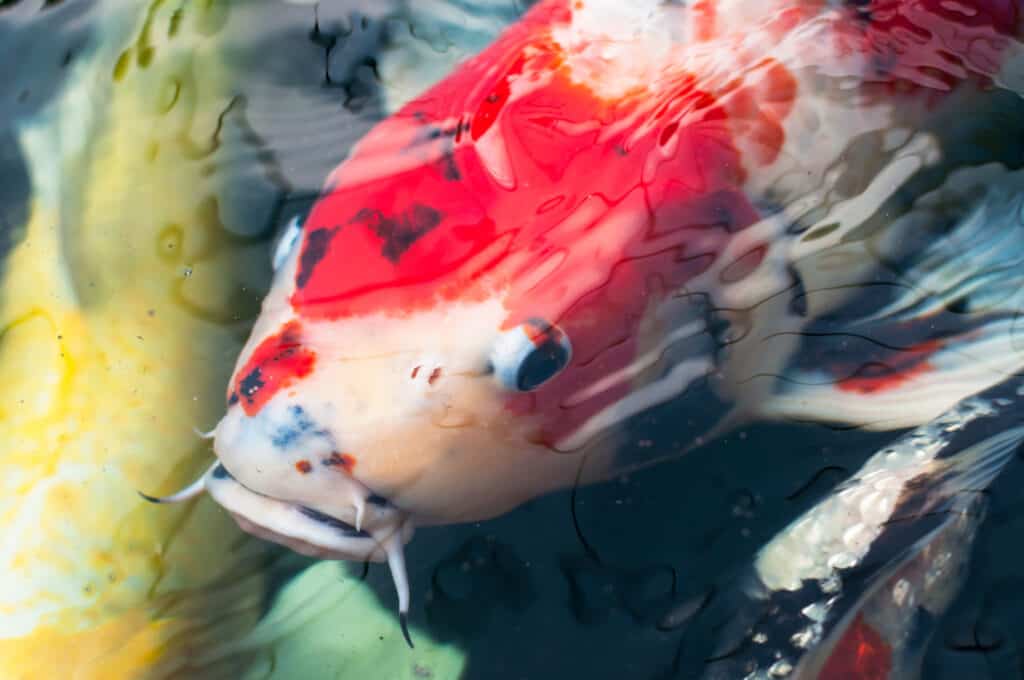
Breeding Koi fish in artificial ponds sounds exciting and somewhat daunting. If you are a Koi fish enthusiast, I’m sure you dream of being able to show off your new batch of tiny fry bred from your pond! But will your Koi fish breed?
Koi fish will breed if the pond has clean, oxygenated water with a temperature of 68°F; sexually mature females and males; and a place to lay eggs. Use spawning brushes and ropes, and place a breeding female and two males in a separate pool to promote successful spawning.
The more knowledgeable you are about breeding Koi and what to expect during the mating season, the easier your breeding journey is! In this article, you will find all you need to know about the mating and breeding season of the Koi.
Pro Tip: If you’re tired of wasting money and making costly mistakes on the koi-keeping hobby or are thinking about buying koi fish but don’t know where to start, I strongly suggest you check out this ebook. I recently read this ebook, and it contains SO much useful information, such as:
- 3 proven steps to identify koi fish diseases
- WARNING: 3 things you should NEVER do when it comes to caring for koi
- When to seek professional help when it comes to looking after your koi
How Do I Know If Koi Are Mating?
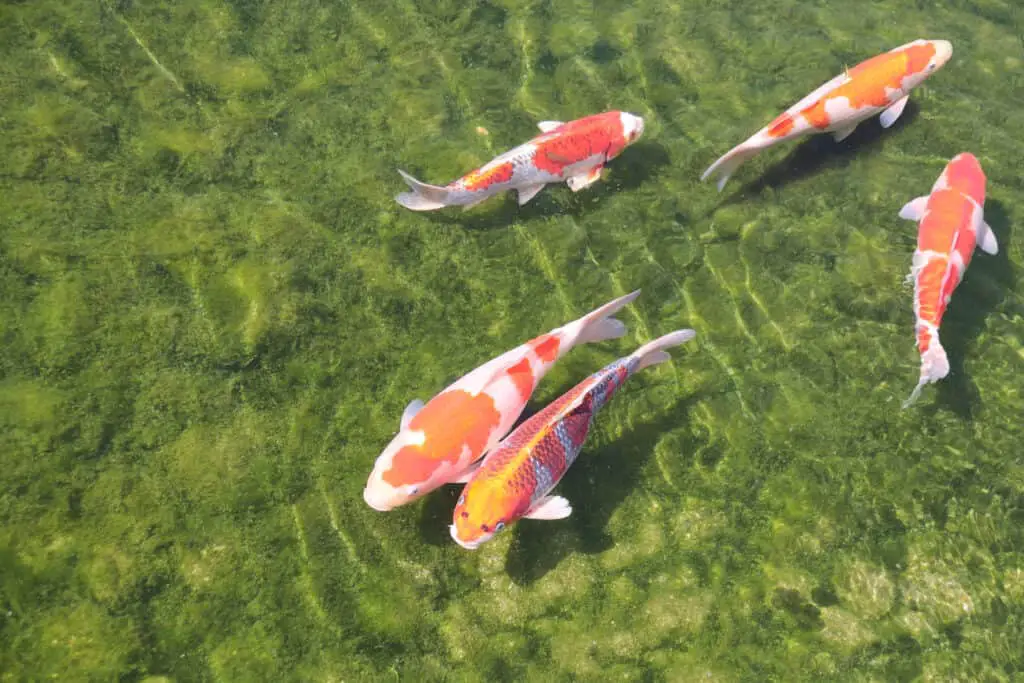
A few changes will occur in your Koi Pond at the onset of the breeding season. You can look out for the following changes in looks and behavior in your Koi fish.
Is My Female Koi Ready To Spawn?
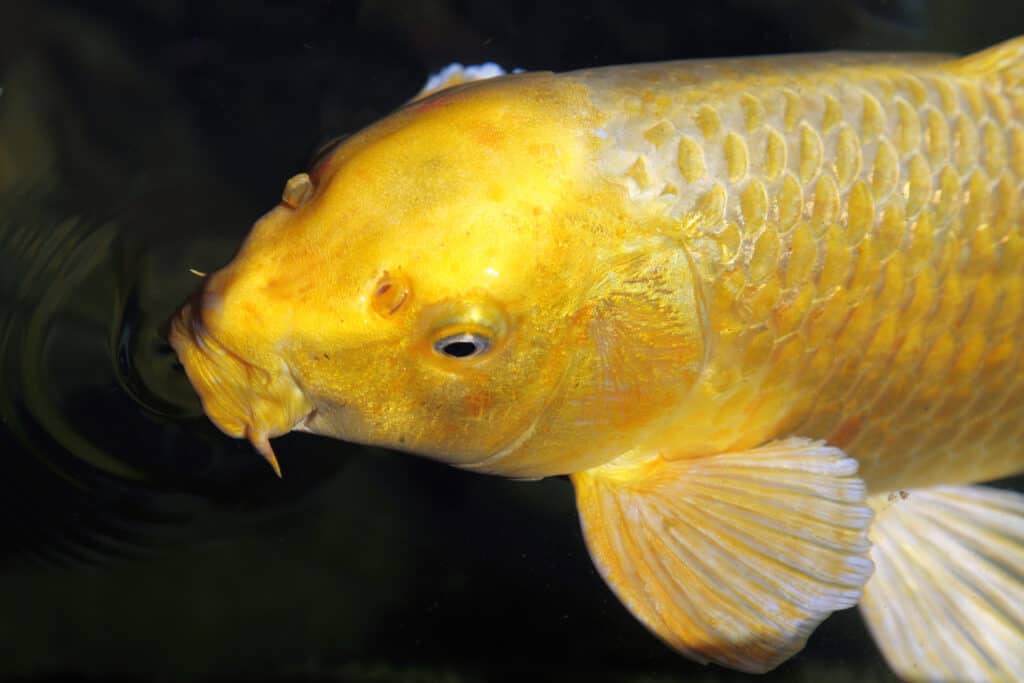
You will first notice that your female Koi develops a full and bloated appearance, usually on one side, which signifies that you have a ‘pregnant koi.’ Female Koi do not actually get pregnant and are not live bearers but instead lay eggs. The eggs get fertilized by the males in the pond.
The female will carry her eggs for a few months, usually during winter. She will lay eggs when the water becomes warmer and the spring and summer seasons change. You might notice that the fuller-figured Koi will feed more eagerly during the egg-carrying cycle. The female carries several thousand delicate translucent eggs.
Koi females are ready to produce eggs when they reach maturity at around four years old. However, younger females can breed, but the quality of the offspring will be low. Females will stop laying eggs at about seven years, so they lay eggs about four times during their lifespan of approximately 50 years and older.
Once you know your female Koi will spawn, give her a soft landing for eggs. You can use nylon rope cut into several strips a few feet long and secure these along the pond walls. The female will lay her eggs here rather than on the pond’s hard surfaces.
Are My Male Koi Fish Ready To Mate?
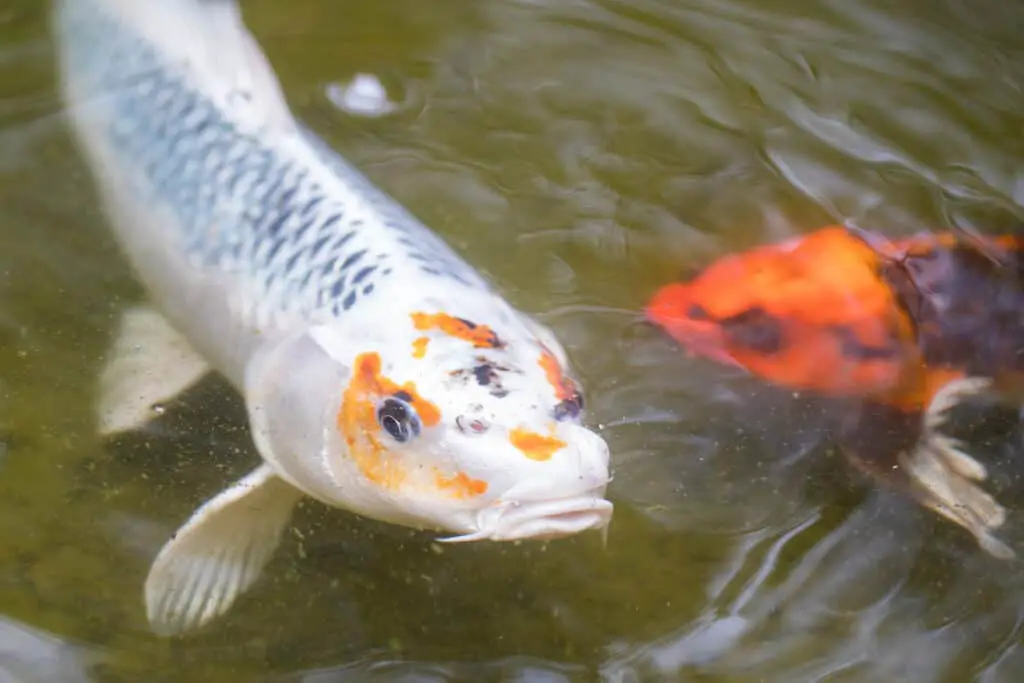
On the other hand, the males exchange their usual docile personalities and become female-chasing suitors. They nudge and bump against the female to encourage her to spill her eggs. Some females may attempt to jump out of the pond, while others will try hiding in the plants and rocks. Keep a close watch on your Koi during this time.
If males are too aggressive, you might want to separate them. Males and females can become bruised, wounded, or lose some scales from bumping and nudging during the mating season. When the eggs are laid, the males fertilize the eggs.
Don’t be alarmed at this stressful and frenzied courtship ritual. It is all part of the spawning process. Spawning usually takes place over a few days. After the eggs have been spilled and fertilized by the males, the pond should return to its quiet and peaceful setting.
Changes In The Water
During spawning, the pond water can become murky, with a foam-like substance floating on the top. The water may also have a fishy smell. This is a sign that the spawning has taken place. It is best to leave the water as is and not interfere with the natural order of nature. Once the breeding cycle is over, this will all go away.
Finding The Fertilized Eggs
The fertilized eggs are very vulnerable as adult fish eat them. To prevent this, gently remove the ropes where the eggs lie. You can house the eggs in a 100-gallon tank filled with a few inches of water.
Caring For Koi Fry
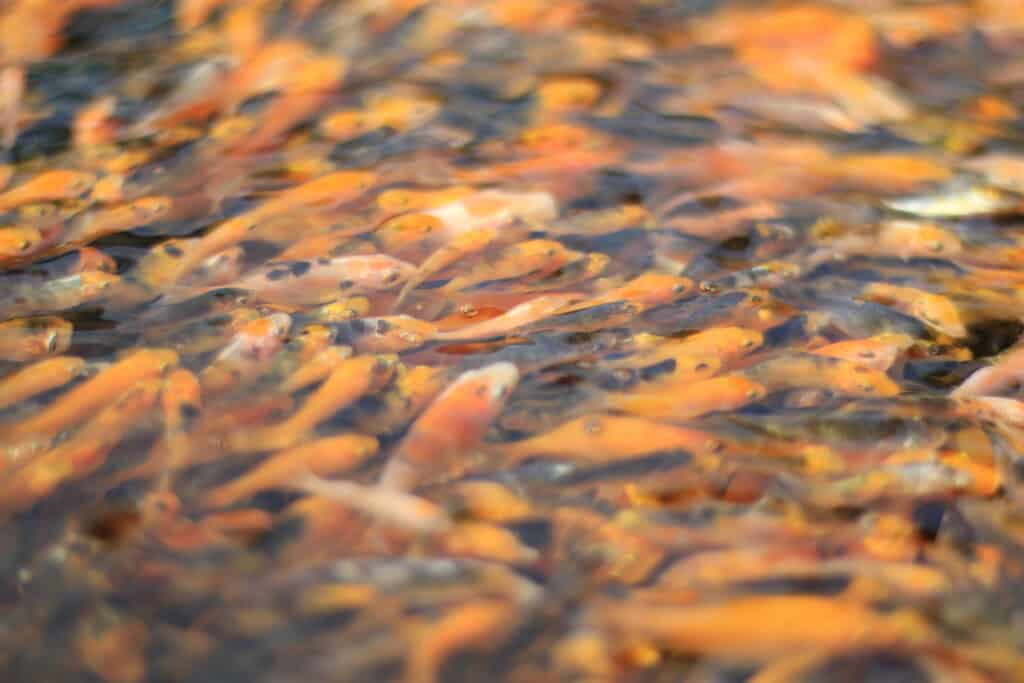
The eggs should hatch within three to four days, but the koi fry will only be able to swim once they are two to three days old. Keep them safe in the tank until they reach about 3 inches in length or four months old before returning them to your Koi Pond. You can feed the baby fry hard-boiled egg yolk that has been crumbed when they are about four days old.
Young Koi fish are tiny, so you can also feed them liquid or small particle food four times a day for the first month.
If you cannot house the baby Koi separately, keep them in the pond. They will hide in pond plants and live off small organisms found in the pond water. Once they start swimming, you will need to feed them.
Why Are My Koi Not Breeding?
If your Koi fish are not breeding, you need to ensure that you have provided the fish with their preferred habitat. Below are some essential guidelines to ensure that your Koi will breed.
Is There Enough Space For Koi To Breed?
If your fish are happy in their environment, they can grow quite large so make sure that the pond is big enough for the females to want to breed. The ideal pond size should hold at least 1000 gallons of water and be at least 3 feet deep.
This will ensure that the Koi find cooler water deep down in summer and warmer water when the weather is cool. Your pond should have a smooth or fine gravel bottom as the Koi will spend most of their time at the bottom of the pond during the cold season.
Is The Water Quality Good For Breeding?
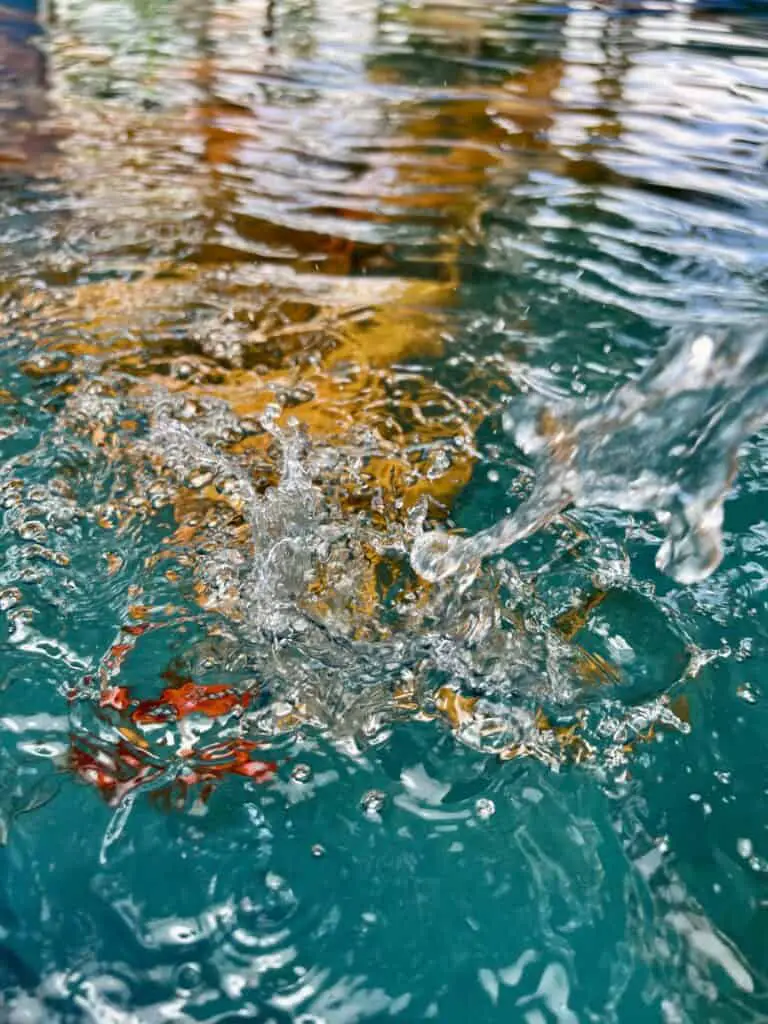
Although tolerant of most water temperatures, Koi fish cannot tolerate sudden fluctuating water temperatures. In winter, ensure that the water does not freeze; in summer, provide some shadow if the pond is not deep enough. These fish should not be exposed to direct sunlight.
Keep large surface sections open for gas exchange within the pond and always maintain an adequate oxygen level. Make use of a waterfall or fountain to assist with the oxygen levels in the pond.
Clean water is vital for healthy fish and creating a zone for breeding. Water should be adequately filtrated, and waste should be regularly cleared. High-volume filters and bottom drains are good practices to install in your pond.
Koi prefer to breed when the water temperature is about 68°F, and a change in the air temperature can encourage mating.
Are The Koi Mature For Breeding?
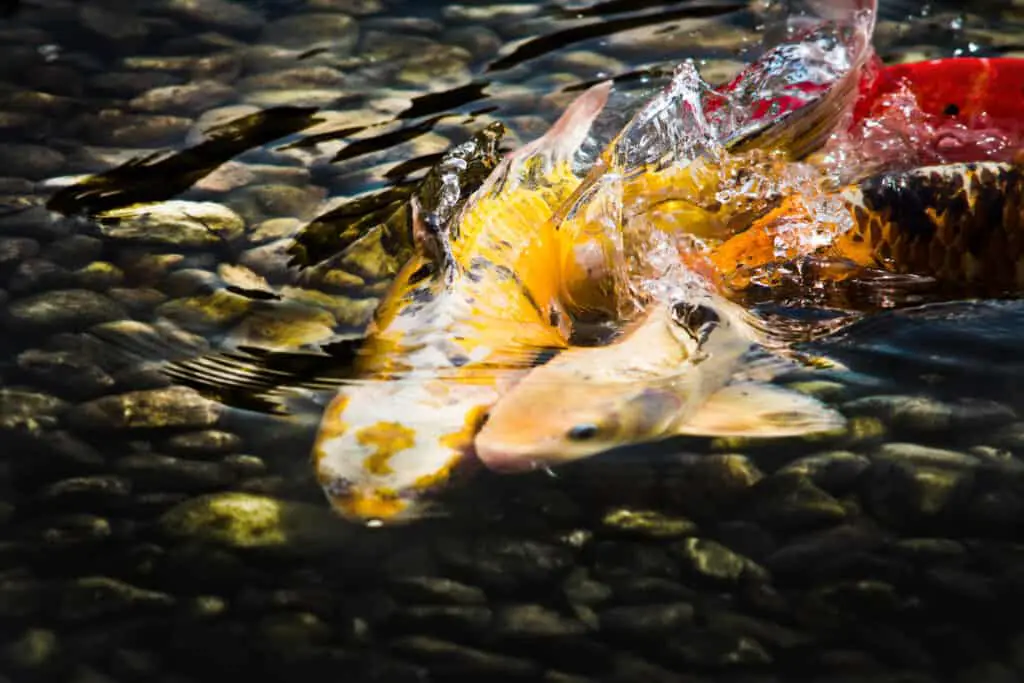
Male and female Koi fish must be about four years old to be mature enough to breed. At this age, the fish are usually about 10 inches long. Ensure that your female Koi is the correct age and size for producing quality eggs.
Identify Male And Females For Breeding
Be sure that there are males and females in the pond. Male Koi have smaller and more pointed fins that are opaque and colorful, while females have larger and more rounded fins. The female fins are partly or entirely translucent.
You can see the difference in the body shape of the Koi. Males are long and slender; females are wider in girth to accommodate the eggs.
Are The Koi Feeding Properly?
The fish’s overall health depends on the food quality they receive. The most common feed for Koi is floating pellets and sticks but add some bloodworms and river shrimp to their diet.
Although Koi should not be overfed, feeding them well for a month before breeding them is a good idea. You can provide food for them four times a day and still feed them as much as they can finish within 5 minutes. Increase the amount of protein or give them protein supplements to support their bodies during breeding.
Give The Female Koi Space To Lay Her Eggs
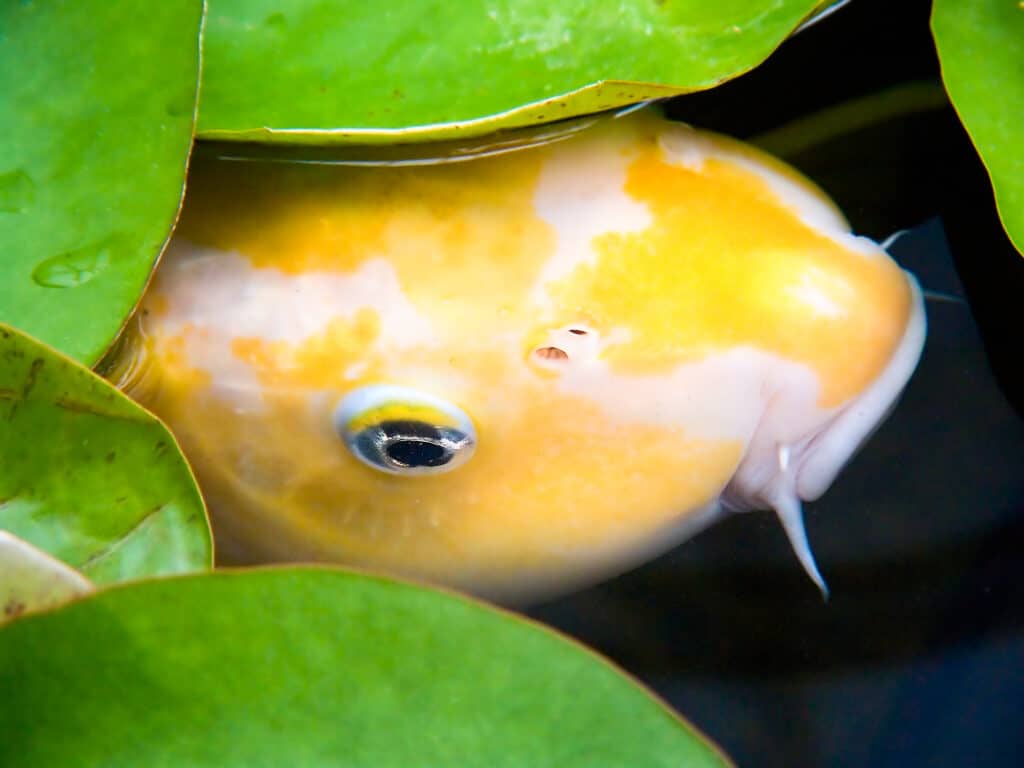
You can purchase a fry mat from the pet store and place this sticky and flat mat in the pond. They will also use spawning ropes, brushes, and floating pond plants to lay eggs. If a female can’t find a space to lay her eggs, breeding might not happen.
How To Encourage Koi To Spawn
The best way to encourage your Koi to spawn is to provide the right conditions for spawning. In their natural habitat, Koi spawn in shallow water.
Create A Temporary Pool For Spawning
You can create shallow water by suspending a net in the pond. Or you can set up a temporary pool like a show vat. The fish will think they are in shallow water.
Fill the pool with 10 – 12 inches of clean water. Do not filter the water. Make sure the net and pool are immaculately clean. Koi will spawn in temperatures of 64°F to 77°F, so if the water in the spawning pool is warmer than in the pond, it will encourage the Koi to breed.
Use a spawning rope or mop as a stimulant to breed. Place them in the pond or the pool. Wash the ropes without chemicals and hang them up outside to dry before use. Spawning ropes mimic the vegetation that Koi would lay their eggs on. Select a female full of eggs and two males to enter your spawning area. Two males will make sure that the eggs are fertilized.
A good time to move the fish to the new area would be mid-afternoon, and they should begin spawning the following morning. It is best to leave the fish to let nature take over but keep an eye on developments. If your fish don’t spawn by morning, leave them in the pool or net for an additional two days. At this time, avoid feeding the fish not to contaminate the water.
Separate The Parents From The Koi Fry
Once the female has finished spilling her eggs, remove the adults from the breeding spot. You don’t want them to feed on the newly laid eggs.
Caring For The Female After She Lays Her Eggs
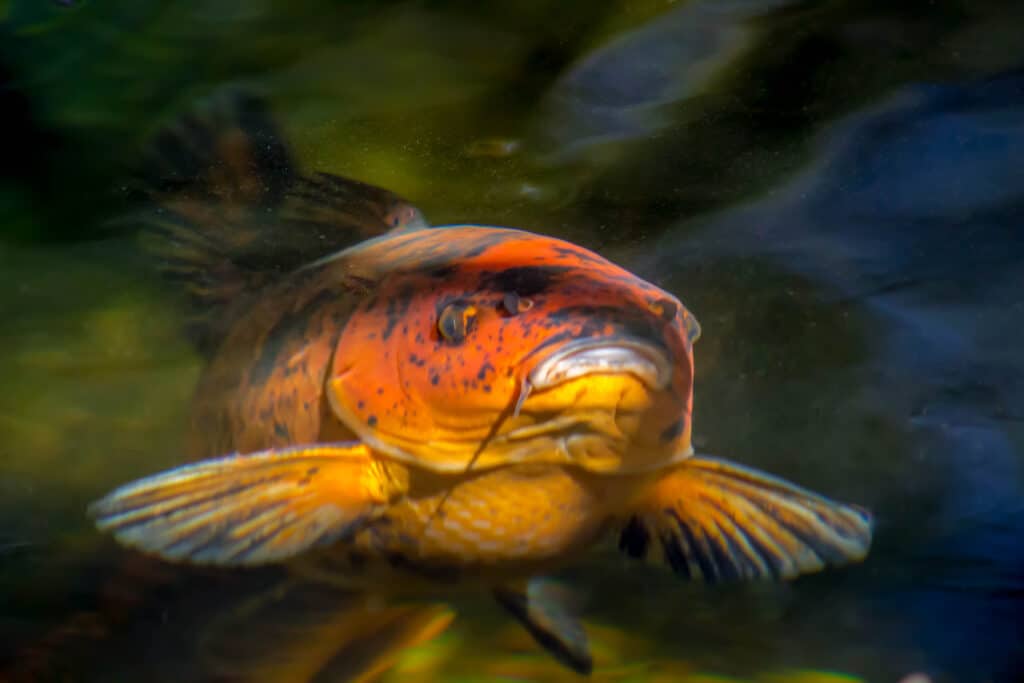
It is best not to return the female to the pond. Give her at least 24 hours to recuperate after laying her eggs. If you place her back in the pond soon after spawning, the pheromones she gives off might encourage the males to try and breed with her, and she could get hurt.
Keep an eye out for any scrapes on the female as this could cause a fungal infection. Use anti-fungal medicine if you notice any cotton wool-like growths on her sides.
Caring For The Baby Koi
Once the parents are removed, trickle some clean water into the pool. This will provide gentle aeration. You will notice that the transparent eggs will develop two black dots, which indicates that the fry is growing inside the egg. These eggs will hatch within several days.
The Koi fry cannot swim but have a sticky pad on its head and will stick to the side of the pond or the spawning ropes for safety. Their mouth is still developing at this stage, and their swim bladder is not functioning.
After another few days, they become full-functioning fish and swim to the surface. They will take their first gulp of air to transfer to their swim bladder, which will give them buoyancy.
The time that this process takes place can vary between 7 to 8 days and will depend on the temperature of the water. Warmer water is the preferred temperature for these tiny Koi fry. Once the baby fry can swim, you can remove the spawning ropes. Keep the water fresh by lots of slow water changing.
When To Move The Fry Into The Koi Pond
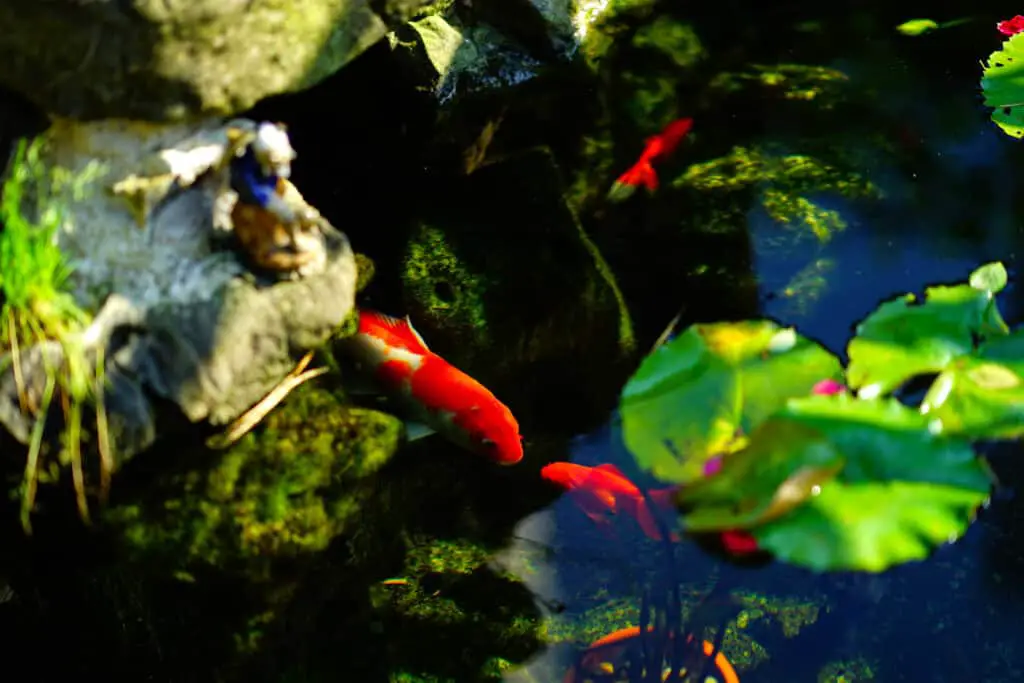
You can move the Koi fry into the big pond when they are about four months old and about 1 inch long. Decide which fish you will keep, which to give to friends, and cull those not in good condition. If you are keeping some of the fry, ensure your pond is large enough to house the new additions.
How To Use Koi Spawning Brushes
Another method to use to encourage spawning is the use of Spawning Brushes. These brushes are made from soft material and won’t harm your Koi. The spawning brushes usually come two in a pack, are 59-inches in length, and are 4 inches wide.
Why Use Spawning Brushes For Koi
Koi would use plants, roots, or algae to lay their eggs if they were in their natural environment. In artificially created pools, spawning brushes are ideal for providing a safe place for the eggs, similar to their natural habitat.
The soft brushes will prevent the Koi from injuring themselves, especially females, during spawning. The fish will use the soft brushes to rub the female against instead of the hard pond edges.
Where To Place Spawning Brushes In A Koi Pond
Place the spawning brushes at the pond’s edge, one above the other, just below the water level. It is good to tie them down, so they don’t float off. The male fish will steer the female so that she is squeezed against the brushes to release her eggs. The eggs will stick to the brushes.
What To Do With The Egg-Filled Spawning Brushes
Once the eggs are laid, remove these brushes from the pond. If the spawning occurs in a temporary pool, remove the females and males. When the Koi fry has hatched and no longer needs the brushes, they can be cleaned and dried, ready to be used for the next breeding session.
Conclusion
Koi will breed when the weather is warmer, and the water temperature reaches a minimum of 68°F. Ensure that the pond water is clean and well-oxygenated and that there are sexually mature male and female fish in the pond. Providing the female fish with a special place to lay her eggs, such as spawning brushes, ropes, and mats, will encourage spawning.
The female carries her eggs during the winter, and you will notice her belly becoming swollen and heavy. When she is ready to spill her eggs, the males will fertilize them, and within 7 to 8 days, the baby fry will be swimming around in their breeding pool. After four months, you can put the fry in the big pond and proudly show off your new batch of baby Koi bred from your pond!
References


